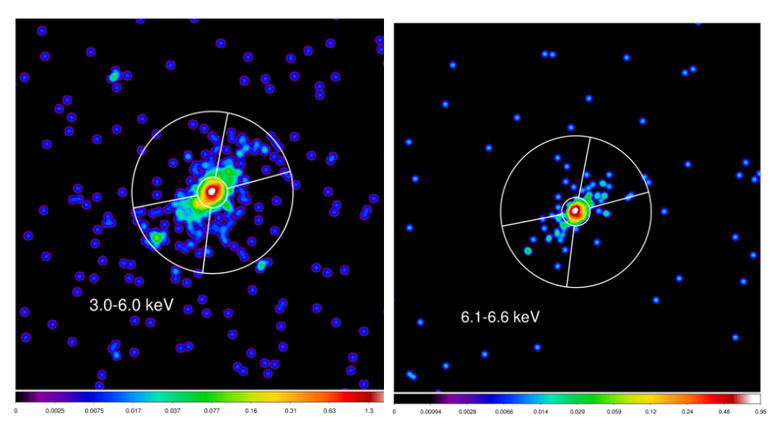
Emission in the 3-6 keV continuum (Left), and the 6-7 keV (FeKα) band (Right). The image is in log intensity scale. The cone sectors, with 8’’ outer radius (including the bulk of the extended emission) are also shown. The cone opening angles are 72 for the SE cone and 64 for the NW cone. The two wider sectors we refer to as the cross-cone direction. The inner circle is at a radius of 1.5”.
Using Chandra, a team of astronomers has found that the nuclear region emitting hard X-rays in galaxy ESO 428-G014 is more than ten times larger in size than conventional models can explain, challenging the basic understanding.
Supermassive black holes containing millions or even billions of solar-masses of material are found at the nuclei of almost all galaxies. Our Milky Way, for example, has a nucleus with a black hole with about four million solar masses of material. Around the black hole is a torus of dust and gas, and when material falls toward the black hole the inner edge of this disk can be heated to millions of degrees, and emit in X-rays. The accretion heating can also drive dramatic phenomena like bipolar jets of rapidly moving charged particles. The charged particles and intense X-rays found inside this region include the most energetic kind, the so-called “hard X-rays” that are thought to interact with material in the torus to stimulate emission from highly ionized, hot iron atoms. High resolution X-ray images from the Chandra X-ray Observatory appear to confirm that the most extreme conditions that make the hard X-rays are contained in a small region only hundreds of light-years in size around the nuclear black hole.
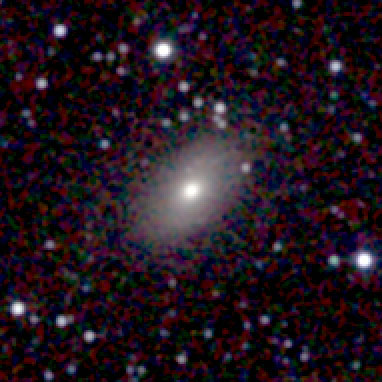
A near-infrared image of the galaxy ESO 428-G014.
At a distance of only about seventy million light-years, ESO428-G014 is a comparatively nearby example of a galaxy with nuclear, hard X-ray emission. As it happens, the nucleus is highly obscured in the optical and low-energy X-rays by dust because we view the galaxy edge-wise through its spiral arms; our line-of-sight may also pass through the circumnuclear torus. The galaxy is of particular interest, however, because the nucleus has a radio jet extending from it. CfA astronomers Pepi Fabbiano, Martin Elvis, Alessandro Paggi, Margarita Karovska, Pete Maksym, and John Raymond, with two colleagues, studied this galaxy using Chandra and taking much deeper exposures than ever before attempted. The scientists report discovering that the extreme X-ray emission is extended, not confined to an inner region, and spans a distance of several thousand light-years rather than just a few hundred. While there have been reports of hard emission outside of the nuclear surrounding in two other galaxies, this is the first time such hard X-ray emission has been found on these large extended scales. Without a doubt, this discovery challenges the basic presumption that it comes only from the most rapidly moving charged particles inside the torus. The scientists offer a few speculative explanations, including the possible acceleration of particles in the radio jet, and plan to continue their research with additional observations.
Reference: “Discovery of Kiloparsec Extended Hard X-ray Continuum and Fe K alpha from the Compton Thick AGN ESO428-G014” by G. Fabbiano, M. Elvis, A. Paggi, M. Karovska, W. P. Maksym, J. Raymond, G. Risaliti and Junfeng Wang, 7 June 2017, The Astrophysical Journal Letters.
DOI: 10.3847/2041-8213/aa7551



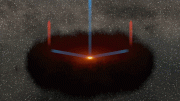

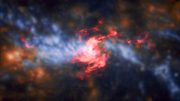
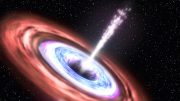
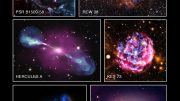

Be the first to comment on "Chandra Reveals Extended Hard X-ray Emission from a Galactic Nucleus"